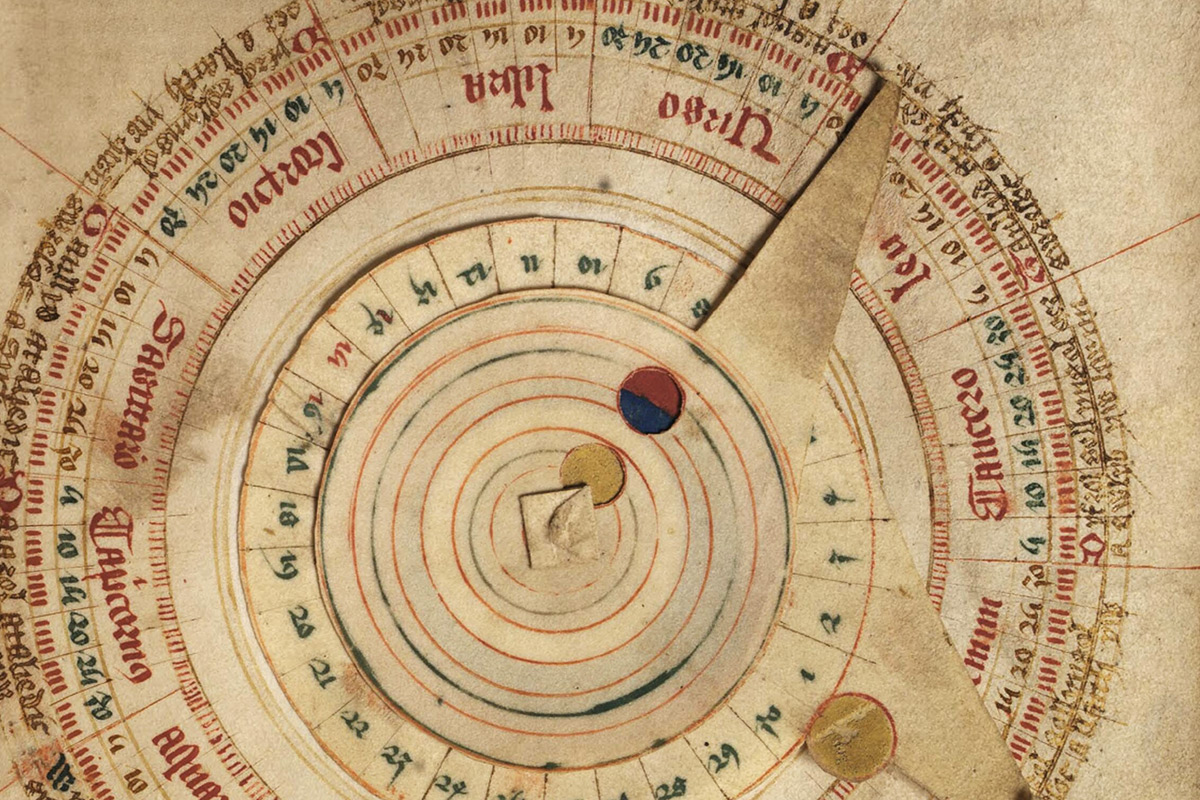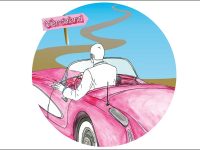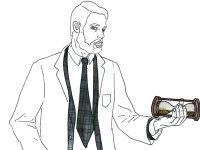To what extent do pseudosciences affect teachers?
A look at the mindset of science teachers in training

Pseudosciences are present and easily accepted by broad sectors of the population. Despite their potential risks, education to counteract pseudosciences is not considered when teaching science; some universities have even offered official pseudoscientific courses. In this text we examine the degree of acceptance of these beliefs in high-school science teachers-in-training, among which significant levels of acceptance of pseudoscience have been detected.
Keywords: scientific culture, pseudoscience, high-school learning, critical thinking, teacher training.
«We can define pseudoscience as knowledge or beliefs presented as science, imitating scientific terms, or appearing to be science»
Pseudoscience everywhere
Etymologically, the prefix pseudo– comes from Greek and means “false”. When added to a concept, it implies that it is not the original, but rather, a copy or a fraud. Consequently, we can define pseudoscience as knowledge or beliefs presented as science, imitating scientific terms, or appearing to be science, but lacking a scientific methodology to support its alleged achievements and based on unverified claims by supposed specialists.

The philosopher of science Mario Bunge denounced pseudoscientific disciplines years ago, stating that they present themselves as scientific in order to seize more legitimacy. / Olmo Calvo / SINC
esent themselves as science in order to seize more legitimacy, as denounced years ago by Mario Bunge (1988) and still today by other authors such as Massimo Pigliucci and Maarten Boudry (2013). Despite their usual lack of rigour, today’s society still easily accepts pseudoscientific concepts, although their motivations for doing so are usually not in the name of the quest for scientific knowledge, but rather, encompass numerous pursuits including the promise of reaching unattainable goals for humanity, the direct search for profit, or political and ideological legitimisation. To bring some order to the avalanche of pseudoscientific activities, here we have established a classification according to the field in which they are active. At the top of the list is the group of pseudosciences with a long tradition and many supporters and this is followed by other groups, including several areas which may have a high social impact.
Thus, classic pseudosciences occupy the first position; these respond to human desires like foreseeing the future (astrology and horoscopes), the different phenomena studied by parapsychology (moving objects with the mind, or telekinesis; communicating with our minds, or telepathy; finding water or hidden objects, or radiesthesia, etc.), or being visited by aliens (ufology and pseudoarchaeology), among others. There are also health pseudosciences, related with many types of therapies and purporting effects which are unsupported by scientific evidence, as is the case of homeopathy, acupuncture, reiki, some diets, the influence of the moon, quantum healing, the effects of WiFi, etc.

It is not difficult to understand why pseudosciences are omnipresent in the media, given the many television channels, programmes such as Cuarto milenio in Spanish TV, or films with fictional scientific approaches devoted to the topic. / Nave del misterio.com
In addition, there are pseudosciences that use unverified scientific postulates to legitimise different ideologies, such as social Darwinism, some neoliberal economic ideas, intelligent design, the heritability of intelligence quotients, anthropic climate change contrarianism, etc. Finally, advertising-related pseudosciences are those that use science to increase the sales of different products, such as cleaning products, cosmetics, superfoods, etc.
«The omnipresent reality of pseudosciences makes us wonder to what degree they are accepted among the educational community»
Paying attention to the broad range and everyday nature of the subjects they relate to, it is not difficult to understand why they are omnipresent in the media, including many television channels, programmes such as Cuarto milenio, and films which pretend to take scientific approaches, such as What the bleep do we know!? (2004) which discusses general quantum physics concepts and uses them to justify quantum healing, or other programmes with superheroes, mutants, etc. with characters that are endowed with characteristics such as telepathy, telekinesis, etc…
How are pseudosciences used?
A logical consequence of the continuous and repeated exposure to pseudoscientific content is that, for instance, almost 30% of the population consider acupuncture and homeopathy very or rather scientific fields, as evidenced in the VII Survey on the Social Perception of Science and Technology in Spain (Fundación Española para la Ciencia y la Tecnología, 2015). The fact that some educators consider homeopathy a scientific discipline (Otzuna, 2014) or that pseudosciences have spaces even in university settings might seem less understandable. This is the case with some subjects, such as optional subject 27558-Nursing in Natural Therapies, offered to third-year students by the University of the Basque Country up until academic year 2014/15 and with some postgraduate degrees, such as the one about Homeopathy, Phytotherapy, and Nutrition for Healthcare Professionals, offered by the Spanish National University of Distance Education (until the academic year 2015/16). This even extends to master’s degrees such as the one for Homeopathic Medicine once offered at the University of Barcelona (2004–2016). We must note, however, that many universities are, fortunately, now eliminating most of these courses thanks to the pressure exerted by sceptics via social networks and by the faculties, students, and victim associations.

Fields of knowledge such as economics, psychology, or biology have also had their share of pseudoscientific ideas, such as, for instance, free market theory and the need for deregulation, which some neoliberalists repeat as a mantra. / Pixabay
In other fields there have also been cultural manifestations against this type of knowledge, beliefs, and products. For example, several authors (Bunge, 1988; Solbes, 2013; Monografía. Ciencia, pseudociencia y publicidad, 2015) have repeatedly denounced astrology, ufology, «scientific» creationism (intelligent design), several therapies (or healing methods), diets, etc. Fields of knowledge such as economics, psychology, or biology have also had their share of pseudoscientific ideas, such as, for instance, free market theory and the need for deregulation, which some neoliberalists repeat as a mantra even though this idea has been questioned by many economists, among them several Nobel Prizes in Economics, including Paul Krugman, Joseph E. Stiglitz, and Amartya Sen, alongside many students of economics around the world (Ferreira, 2015; Krugman, 2009; The Post-Crash Economics Society, 2014). There are also those who believe that the intelligence quotient is mostly heritable (an aspect of genetic determinism) and leave aside knowledge indicating that intelligence quotients are partly inherited and partly due to learning (Puig & Jiménez-Aleixandre, 2010). Or that competition favours (or selects) the fittest, a claim initially proposed by social Darwinism – a daring extrapolation of Darwinism applied to society (Ruse, 2017). The defence of some economists, psychologists, or biologists provides these ideas with a certain scientific status, which allows political and economic powers to legitimise their decisions on education, taxes, labour reforms, etc.
We can find many examples of this use in statements by politicians to the press, including Mariano Rajoy in 1983 when he claimed in the newspaper Faro de Vigo:
And this knowledge that man had intuitively – it was an objective fact that children from a «good lineage» were better than the rest – was later confirmed by science: since Mendel formulated his famous «Laws» […] The natural inequality of man is written in the genetic code, the root for all human inequality: all our conditions, from physical ones: health, eye colour, hair, constitution… to the so-called psychological ones, such as intelligence, predisposition for art, study, or business, are transmitted in this code.
(Rajoy, 1983, p. 2)
«Despite their usual lack of rigour, today’s society easily accepts pseudoscientific concepts, although their motivations are usually not in the name of the quest for scientific knowledge»
Or a statement by the former Minister of Health Ana Mato: «we will remove drugs with low therapeutic value from the vade mecum, and substitute them with something natural» (Sahuquillo, 2012). Falling into the naturalistic fallacy, she compared medications that need to pass rigorous clinical studies before they are marketed with other products that do not pass them because they are sold as food supplements, etc. There are other examples beyond the Spanish borders, like the term bad science, used in the USA by politicians like Donald Trump to refer to the scientific consensus regarding the anthropic character of climate change and the current ban on spreading these ideas on social networks. They claim that global warming is a Chinese invention to hurt North American industry. Or in the 2011 statement by congresswoman Michele Bachmann: «I support intelligent design. I don’t think it’s a good idea for government to come down on one side of a scientific issue or another, when there is reasonable doubt on both sides.» Of course, there is no «reasonable doubt» between two sides. Rather, it is a religious choice, more cultural than scientific, opposed to Darwinism.
In short, we coincide with Edzart Ernst when he claimed that «when science is abused, hijacked or distorted to serve political or ideological belief systems, ethical standards will inevitably slip. The resulting pseudoscience is a deceit perpetrated on the weak and the vulnerable» (Salas, 2015).
Despite the potential risk that pseudoscience poses to society, science education does not provide a rigorous approach to these beliefs (Martin, 1994; Monografía. Ciencia, pseudociencia y publicidad, 2015) and neither do institutions that provide education on the topic. In this sense, it is interesting to note that UNESCO, which has not assigned any code to science education, has allocated code 6110 to parapsychology (Solbes, 2013). This code implies a recognition of its scientific status and, indeed, the Spanish government uses these codes to allocate research resources.
The omnipresent reality of pseudosciences makes us wonder to what degree they are accepted among the educational community. Thus, to answer this question we researched and analysed the extent to which science educators-in-training are affected by pseudoscientific beliefs.
Methodology
The objective of this work was to explore the presence or absence of pseudoscientific thinking among educators. To do this, we used a questionnaire with thirteen questions related to aspects considered to be pseudoscientific by most of the scientific community. Some of the questions were related to health and had already been used in previous research (Lundström & Jakobsson, 2009). The level of agreement with the questions were assessed on a Likert scale with no central value as agree, partly agree, partly disagree, or disagree. After a pilot test of the questionnaire, we removed one item and altered the formulation of another three.
Give a score from 1 to 4 based on your level of agreement with the following statements: 1. I agree. 2. I partly agree. 3. I partly disagree. 4. I disagree. If you want to explain your answer, you can do so below.
-
-
As outlined by quantum healing, consciousness can heal the body in a similar way to how the observer modifies the phenomenon in quantum mechanics.
-
The free market is characterised by efficiency and by producing goods and services at low costs, maximising business profits, and the usefulness of agents; therefore, government intervention must be minimal.
-
The intelligence quotient (IQ) measures the general intelligence on an individual. It is predominantly inherited, so it cannot be modified too much by the school and family environment.
-
In the past the Earth was visited by extraterrestrial civilisations that left extensive evidence of their visit.
-
Astrologists claim that the position of celestial bodies at the time of birth determines people’s life paths. Do you think astrology can influence your personal life?
-
Humans are not descended from other primates. They were created at a particular moment in the history of the Earth.
-
The principles of natural selection also work in human institutions; therefore, as social Darwinism proposes, we must foster competition (national, individual, business, etc.) for resources or social positions in order to guarantee progress.
-
The phase of the moon can affect, to some extent, several factors such as health, the birth of children, or certain agricultural tasks.
-
Homeopathy is a remedy for some diseases.
-
As a component of traditional Chinese medicine, acupuncture is an effective remedy for many diseases.
-
There are many weight-loss diets whose active mechanism have not yet been discovered but are supported by many testimonies.
-
Some people can communicate through their minds.
-
Current climate change is not generated by humans and is the product of natural causes.
-
Questionnaire used to analyse the extent to which science educators-in-training are affected by pseudoscientific beliefs.
To carry out the research, a convenience sample was taken, comprising 131 science educators-in-training who were participating in Secondary School master’s degrees with a science specialisation at the Valencian International University and the University of Valencia. Most of these graduates had higher studies in chemistry (49.6 %) and five of these had PhDs, there were also graduates in engineering (19.1 %), physics (6.9 %), pharmacy (4.6 %), biology (4.6 %), and others (11.5 %).
Results
To facilitate the analysis of the results, the answers were grouped into only two categories: those who answered «agree» and «partly agree», which we considered as the «agree» group, and those who answered «disagree» and «partly disagree», which we considered the «disagree» group.
«The level of acceptance of pseudosciences is unfortunately high among our future science educators, as occurs in society in general»
The first noteworthy aspect of the analysis was that, even though all the participants had backgrounds in science, 7.6 % (with a standard error of 2.3) still agreed that «Current climate change is not generated by humans and is the product of natural causes», while 10.7 % (2.7) considered that «In the past the Earth was visited by extraterrestrial civilisations that left extensive evidence of their visit». More worrying is the fact that, even though most of these students had studied evidence in favour of the theory of evolution as part of their degrees, 10.7% (2.7) had not completely banished creationist ideas and agreed that: «Humans are not descended from other primates. They were created at a particular moment in the history of the Earth».
Although the unscientific nature of astrology has been proven multiple times, 13.7 % (3.0) of the respondees endorsed it by agreeing with the question «Astrologists claim that the position of celestial bodies at the time of birth determines people’s life paths. Do you think astrology can influence your personal life?». Regarding telepathy, 16.8 % (3.3) of educators thought that «some people can communicate through their minds». A similar percentage, 18.3% (3.4), agreed that «There are many weight-loss diets whose active mechanism have not yet been discovered but are supported by many testimonies». Furthermore, 21.4 % (3.6) agreed with the statement «The intelligence quotient (IQ) measures the general intelligence on an individual. It is predominantly inherited, so it cannot be modified too much by the school and family environment».
More numerous (35.1 %; 4.2) were those who thought that «The free market is characterised by efficiency and by producing goods and services at low costs, maximising business profits, and the usefulness of agents; therefore, government intervention must be minimal». On the other hand, future science educators agreed or partly agreed (42 %; 4.3) with the statement «As outlined by quantum healing, consciousness can heal the body in a similar way to how the observer modifies the phenomenon in quantum mechanics» and, a similar percentage, 40.5 % (4.3), considered that «The principles of natural selection also work in human institutions; therefore, as social Darwinism proposes, we must foster competition (national, individual, business, etc.) for resources or social positions in order to guarantee progress.»
Despite its criticism by science communicators and the media, homeopathy was supported by 51.9 % (4.4) of educators, who agreed that it «is a remedy for some diseases». The fact that educators believe that the moon has an influence on everyday life events was also surprising: most (64.9 %, 4.2) agreed with the statement that «The phase of the moon can affect, to some extent, several factors such as health, the birth of children, or certain agricultural tasks». It should also be noted that 78.6 % (3.6) of educators agree that «As a component of traditional Chinese medicine, acupuncture is an effective remedy for many diseases».
The standard error, with 95 % confidence, always gave error margins that were lower than the percentages and so the results are reasonably significant, despite the small size of the sample. In short, these results allow us to assert that, to different levels and depending on the case, educators-in-training with science degrees believe in different pseudosciences.
«We also think it is important to demand some responsibility from the media regarding their pseudoscientific content, which is usually embellished with the halo of journalistic research»
Conclusions
Our overall conclusion in this work was that the level of acceptance of the abovementioned pseudosciences is unfortunately high among our future science educators, as occurs in society in general. For instance, pseudosciences that are used to legitimise certain policies (social Darwinism or some neoliberal economy statements for example), receive extensive support.
Health-related pseudosciences (acupuncture, homeopathy, quantum healing) are particularly well received, especially homeopathy and acupuncture, perhaps thanks to their social prestige or to institutional support; homeopathy, for example, has been specifically regulated in Spain since 1994 by Royal Decree 2208/1994 (adapted from the European Council Directive 92/73/EEC), allowing homeopathic products to be sold without proving their effectiveness. Acupuncture also enjoys widespread acceptance among the general public (Fundación Española para la Ciencia y la Tecnología, 2017), which is not surprising, because some reviews, such as those by the Cochrane foundation, offer results that are slightly better than those from the placebo for some diseases, although as the foundation recommends in its reviews, improved study design may negate these results (Deare et al., 2013).

The defence of some economists, psychologists, or biologists provides pseudoscientific ideas with a certain scientific status, which allows political and economic powers to legitimise their decisions on education, taxes, labour reforms, etc. / Rafael Matsunaga
The number of people who accept the influence of the moon is high, perhaps due to its alleged role in health and in agriculture, but we should note, too, that there were also affirmative answers to questions about telepathy, astrology, or visits by extraterrestrial civilisations, although with a much lower occurrence. If we consider that the sample was of graduates from scientific degrees who aspire to become high-school teachers, this is a cause for concern, because, in principle, these are the future educators who must adopt educational measures to counteract the pestering influence of pseudoscience. In fact, this problem is already a concern in high schools: In a recent study, Palomar, Domínguez-Sales, and Solbes (2016) asked adolescents similar questions and received answers in favour of pseudoscientific ideas, although surprisingly, the ratio was slightly lower than we report her for educators.

Health-related pseudosciences (e.g., acupuncture, homeopathy, or quantum healing) are particularly well received, especially homeopathy and acupuncture, perhaps thanks to their social prestige or to institutional support. / Wikidudeman
As in previous studies (Fundación Española para la Ciencia y la Tecnología, 2017; Johnson & Pigliucci, 2004), these results initially seem to indicate that the level of acceptance of pseudoscience is independent from science education levels. However, we must not ignore the importance of «non-formal science education», in particular, ideas coming from cinema, television, and the Internet, as well as from conversations with colleagues, friends, and family. Some work even suggests that science fiction and superhero cinema influence the image of science and scientists more than formal science learning does (Petit & Solbes, 2012).
Ultimately, our data analysis leads us to assert that we must be alert to the presence of pseudoscientific thinking in classrooms. Thus, we suggest that criticism of these beliefs should be included in the Spanish science curriculum, as in other countries, to help promote the development of critical thinking with regard to pseudoscience among our students. The Organic Law on Education used to allow for this as part of the Science for the Contemporary World subject which was mandatory for all first-year upper secondary-education students. The aim of this law was to promote reflection on social and scientific questions. However, the Organic Law on the Improvement of the Quality of Education eliminated this subject and instead introduced Scientific Culture, which is merely instructive and is optional (it competes with other subjects such as Religion) and so, like other optional science subjects, it is seldomly chosen by students. Thus, we propose the recovery of this subject, and also think it is important to demand some responsibility from the media regarding their pseudoscientific content, which is usually embellished with the halo of journalistic research.
References
Bunge, M. (1988). Pseudociencia e ideología. Madrid: Alianza.
Deare, J. C., Zheng, Z., Xue, C. C. L., Liu, J. P., Shang, J., Scott, S. W., & Littlejohn, G. (2013). Acupuncture for treating fibromyalgia. Cochrane Database of Systematic Reviews, 5. doi: 10.1002/14651858.CD007070.pub2
Ferreira, J. L. (2015). Economía y pseudociencia. Crítica a las falacias económicas imperantes. Madrid: Díaz & Pons Ed.
Fundación Española para la Ciencia y la Tecnologia. (2015). Percepción social de la ciencia y la tecnología 2014. Retrieved from https://www.fecyt.es/es/node/3118/
Fundación Española para la Ciencia y la Tecnologia. (2017). Percepción social de la ciencia y la tecnologia 2016. Retrieved from https://www.fecyt.es/es/node/4137/
Johnson, M. & Pigliucci, M. (2004). Is knowledge of science associated with higher skepticism of pseudoscientific claims? The American Biology Teacher, 66(8), 536–548.
Krugman, P. (2009, 2 de setembre). How did economist get it so wrong? The New York Times Magazine. Retrieved from http://www.nytimes.com/2009/09/06/magazine/06Economic-t.html
Lundström, M., & Jakobsson, A. (2009). Students’ ideas regarding science and pseudo-science. Nordic Studies in Science Education, 5(1), 3–17. doi: http://abt.ucpress.edu/content/66/8/536
Martin, M. (1994). Pseudoscience, the paranormal, and science education. Science & Education, 3(4), 357–371.
Monografía. Ciencia, pseudociencia y publicidad. (2015). Alambique. Didáctica de las ciencias experimentales, 81, 5–42.
Oztuna, A. (2014). Research on the pseudoscientific beliefs of preservice science teachers: a sample from astronomy astrology. Journal of Baltic Science Education, 13(3), 381–393.
Palomar, R., Domínguez-Sales, M. C., & Solbes, J. (2016, 13 de juny). Las visiones del alumnado y los profesores en formación sobre las pseudociencias. III Simposio Internacional de Enseñanza de las Ciencias SIEC. Retrieved from http://aplicacion.siec2016.org/pdf.png
Petit, M. F., & Solbes, J. (2012). La ciencia ficción y la enseñanza de las ciencias. Enseñanza de las Ciencias, 30(2), 69–86. doi: 10.5565/rev/ec/v30n2.494
Pigliucci, M., & Boudry, M. (Eds.). (2013). Philosophy of pseudoscience: reconsidering the demarcation problem. Chicago: University of Chicago Press.
Puig, B., & Jiménez-Aleixandre, M. P. (2010). What do 9th grade students consider as evidence for or against claims about genetic differences in intelligence between black and white ‘races’? In M. Hammann, A. J. Waarlo, & K. Th. Boersma (Eds.), The nature of research in biological education: old and new perspectives on theoretical and methodological issues (pp. 153–166). Utrecht: Utrecht University.
Rajoy Brey, M. (1983, 4 March). Igualdad humana y modelos de sociedad. Faro de Vigo. p. 2.
Ruse, M. (2017). Evolutionary biology and beliefs. How ideology can draw different social stances from science. Mètode Science Studies Journal, 7, 53–59. doi: 10.7203/metode.7.7611
Sahuquillo, M. R. (2012, 20 June). Mato dice que 200.000 activos adquieren fármacos con tarjetas de pensionistas. El País. Retrieved from https://elpais.com/sociedad/2012/06/25/actualidad/1340616210_487780.html
Salas, J. (2015, 28 December). El hombre que derribó con ciencia las terapias alternativas. El País. Retrieved from https://elpais.com/elpais/2015/12/26/ciencia/1451149669_854409.html
Solbes, J. (2013). Contribución de las cuestiones sociocientíficas al desarrollo del pensamiento crítico (II): Ejemplos. Revista Eureka sobre Enseñanza y Divulgación de las Ciencias, 10(2), 171–181. doi: 10498/15113
The Post-Crash Economics Society. (2014). Economics, Education and Unlearning: Economics Education at the University of Manchester. Retrieved from http://www.post-crasheconomics.com/download/778
Note
This work is framed within the project Proposal for the improvement of science teacher training based on inquiry and modelling in context (EDU2015-69701-P), funded by the Ministry of Economy, Industry, and Competitiveness and the European Regional Development Fund.





